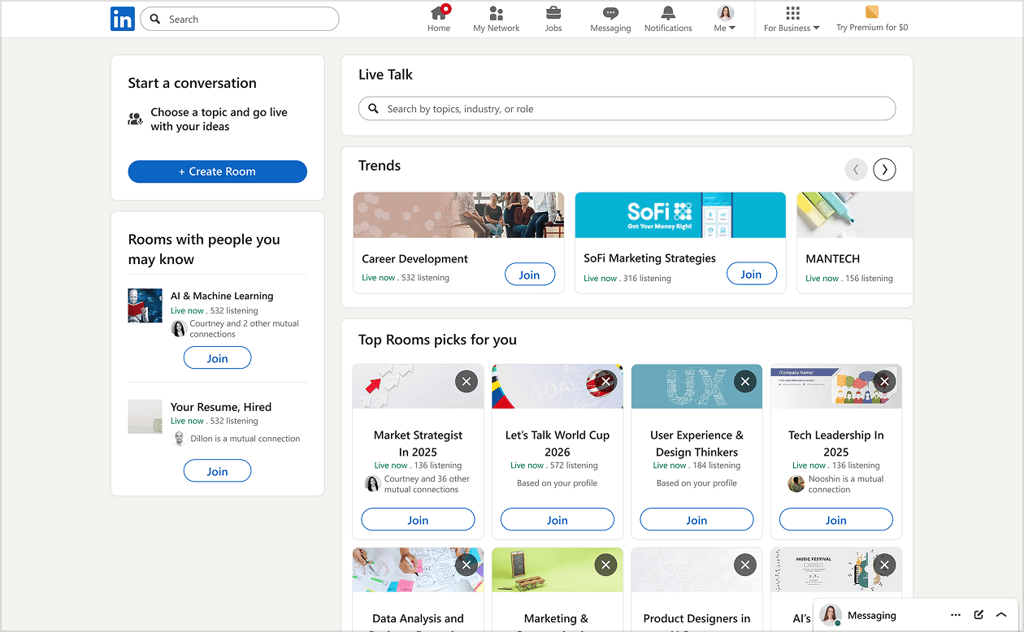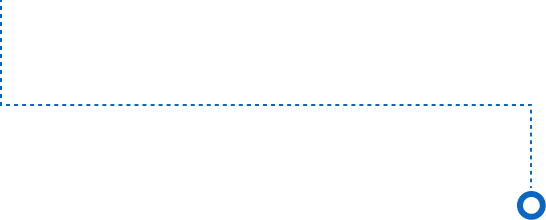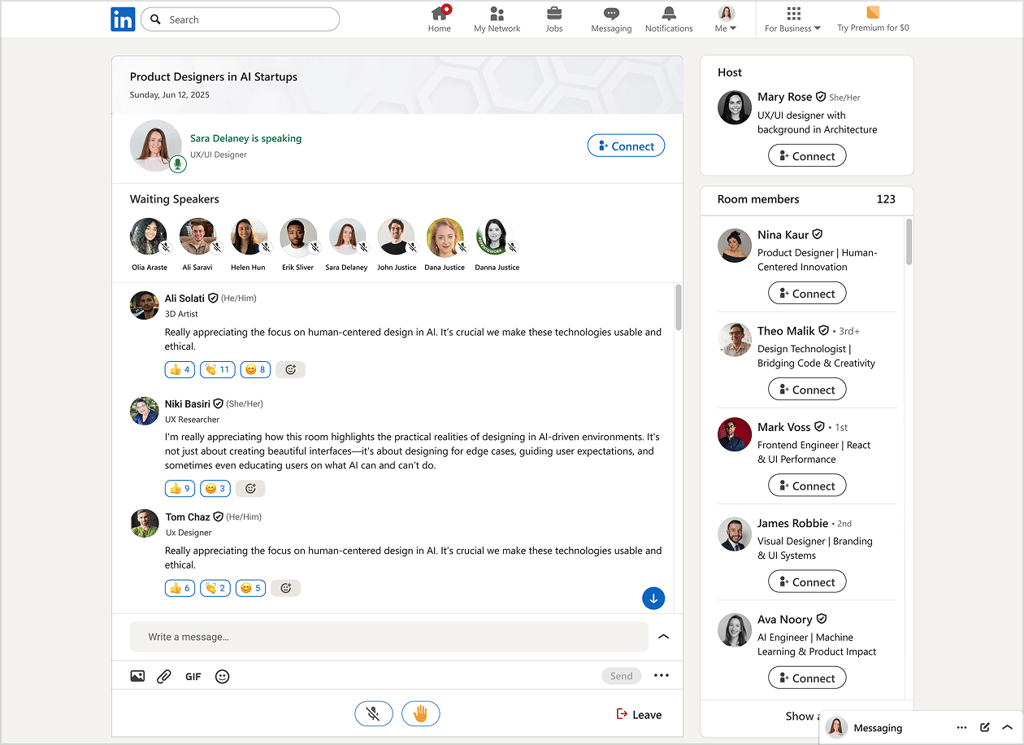Helping LinkedIn Job Seekers Stay Motivated Through Personalized Discovery and Supportive Features
A UX project to uncover why job seekers felt lost and unmotivated during the job application process, and how simplifying steps and adding a clear tracking system improved their confidence, clarity, and follow-through.
Role
UX/UI Designer
UX Researcher
Timeline
5 Weeks
Team
2 People
Mentor
Marziyeh Nadali
Contex
The Struggle Behind the Scroll: A Job Seeker’s Day on LinkedIn
LinkedIn is the world’s largest professional networking platform, with over 1 billion members across more than 200 countries. It serves as a central hub for job seekers, recruiters, and companies, empowering users to apply for jobs, build connections, and grow their careers. But for many, navigating the platform’s job search experience can be draining. This storyboard captures one frustrating day in the life of a job seeker trying to find opportunities, apply and make sense of a process that often feels discouraging.
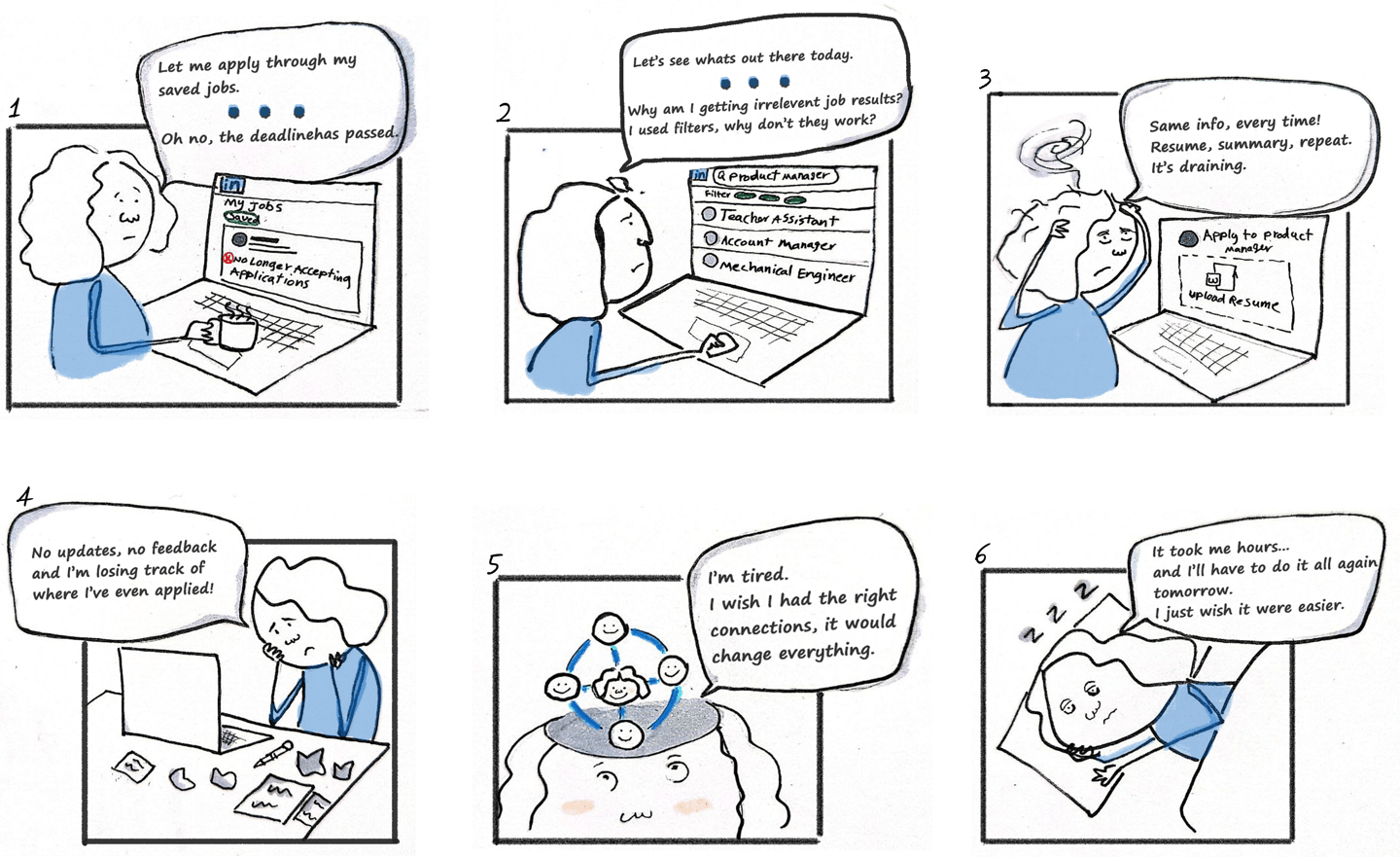

Getting hired is tough, but why does applying feel even tougher?
Discover and Research
Challenges in the Job Search: Long Applications, No Feedback, and Irrelevant or Fake Listings
LinkedIn users face long application flows, lack of tracking after applying, scam job posts, and irrelevant search results; turning the job hunt into a confusing and discouraging experience.
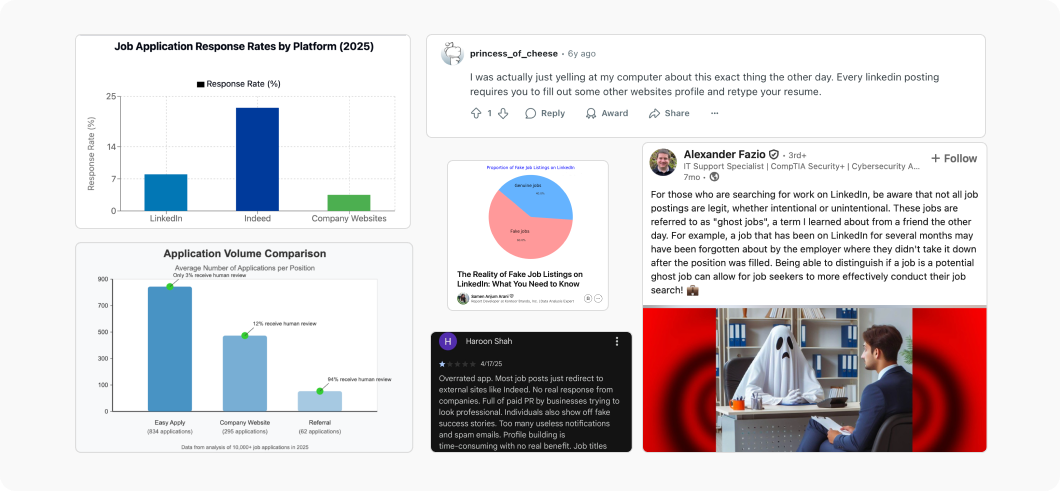

Understanding User Core Needs
The Job Search Process: A Journey of Frustration, Confusion, and Fading Motivation.
After 13 user interviews and contextual inquiries, we uncovered key breakdowns across the job application journey, from search to tracking.
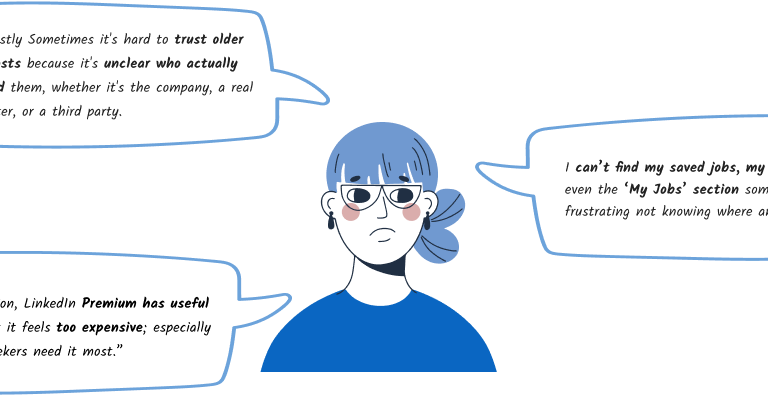


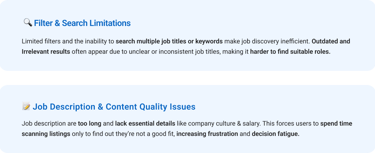
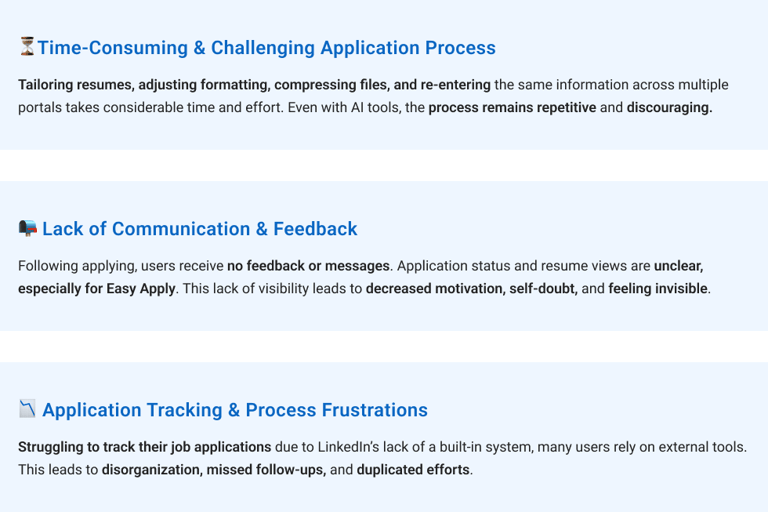

That’s when we realized, it’s not just a job hunt, it’s an emotional journey.
Defining Personas
The Humans Behind the Profiles
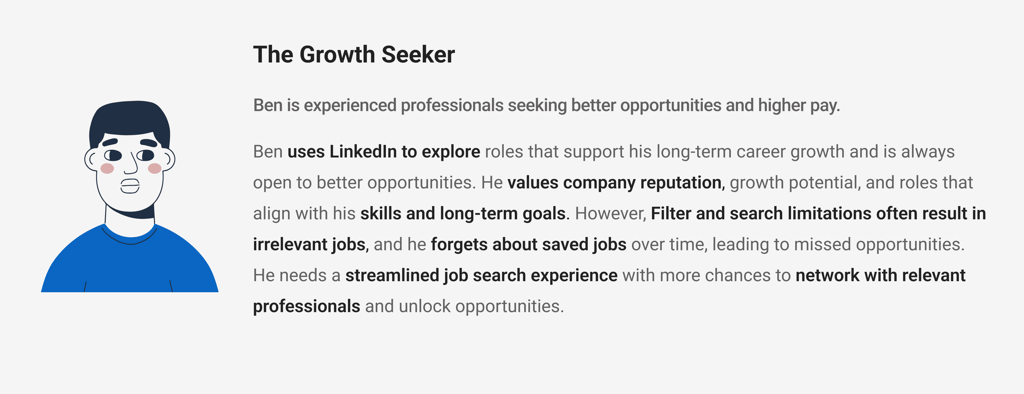

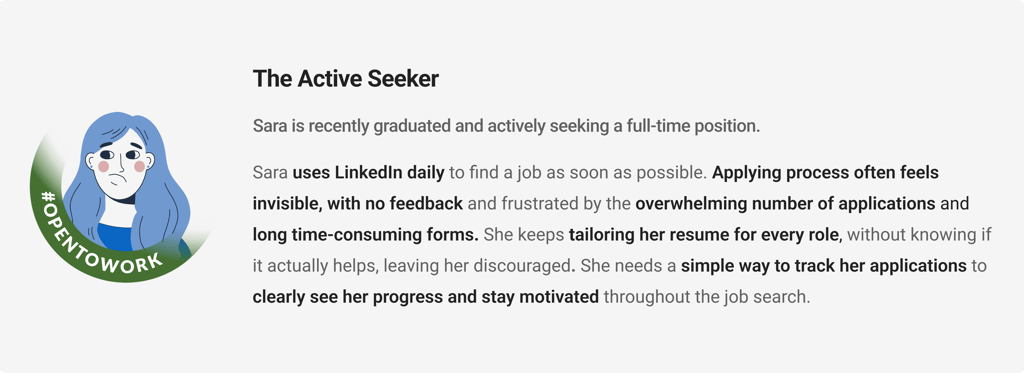

Archetype 1
Archetype 2
Job Platform Benchmarking
LinkedIn Makes Job Access Easy, but Misses Out on Personalization, Feedback, and Career Support


We conducted a competitive analysis of five major job platforms, Handshake, Indeed, ZipRecruiter, XING and Glassdoor to uncover features that elevate the job search experience.
Exploring today’s top job platforms revealed a clear pattern: from tailored job recommendations based on user preferences to real-time application tracking and integrated company ratings & reviews, every step feels more intentional. Users can prepare with mock interviews and grow with both self-guided and coach-led tools, while smart connection suggestions create meaningful interactions.
These findings laid the foundation for our ideas.
Prioritizations Matrix
Turning Insights into Action
After evaluating a wide range of opportunities, we prioritized the ones that offer high user value with manageable effort. This helped us define a clear and focused direction for starting point, grounded in both user needs and feasibility.
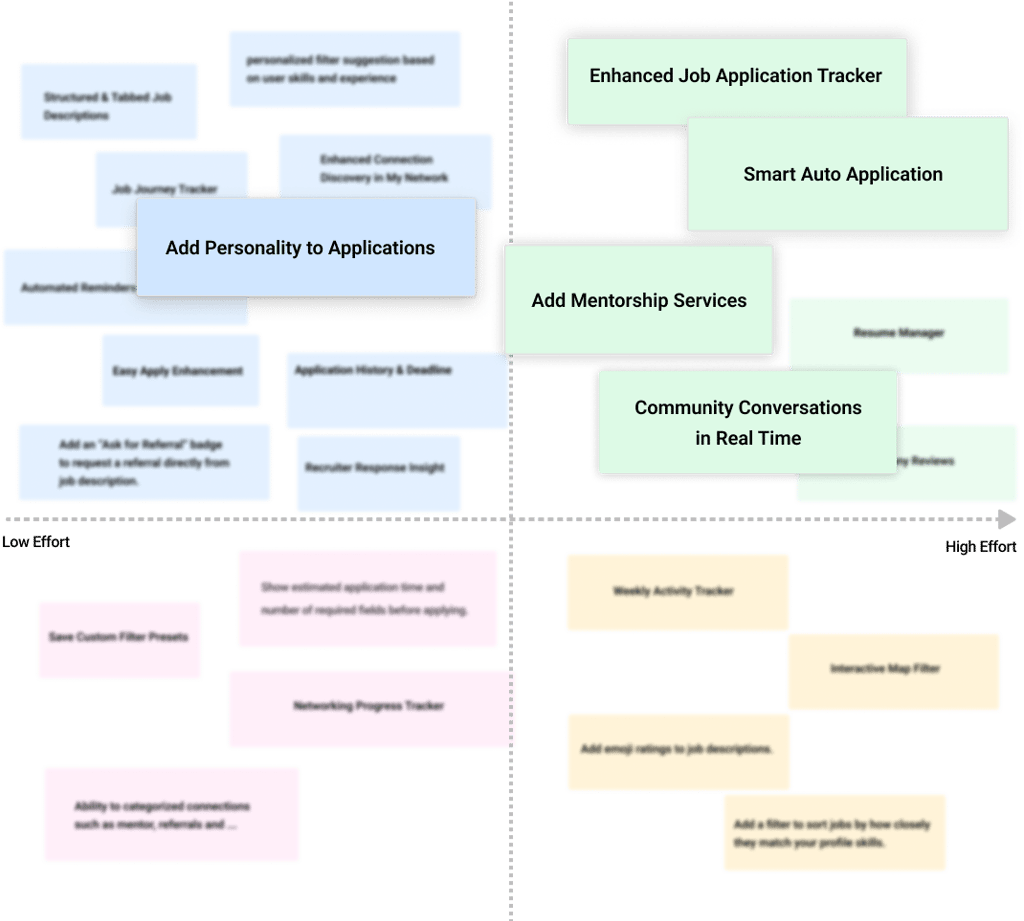

Visual Design
Turning User Needs Into Meaningful Interface Concepts
After our ideation sessions, we evaluated each solution based on feasibility, viability and desirability to determine which one to move forward with.
Solution 1
Boosting Job Search Efficiency with Smarter Tracking
❌ Problem
Users struggle to track applications and statuses, leading to missed follow-ups and disorganization. They need a clear, easy way to manage and stay on top of their job search.
💡Solution
Users can track job applications with key details, filter and sort them easily, add notes or tags, and sync with their calendar to manage interviews and deadlines.
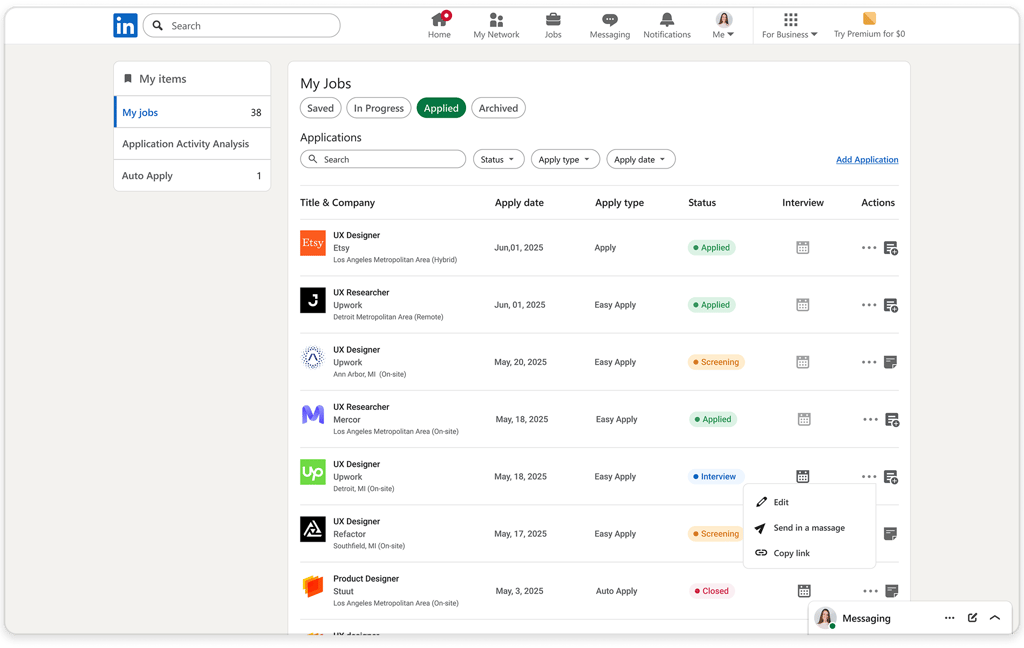

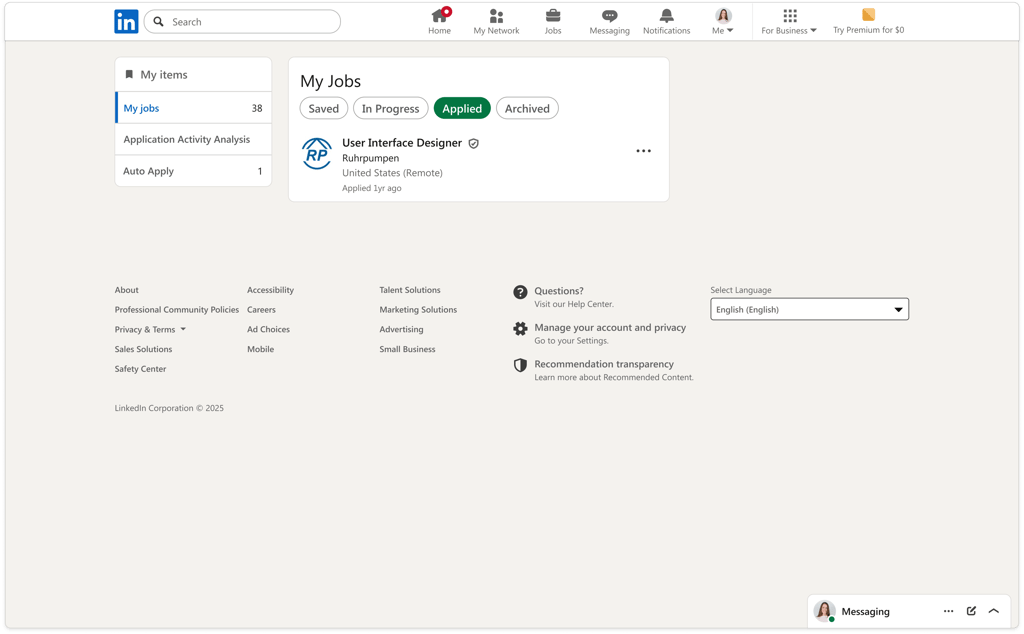






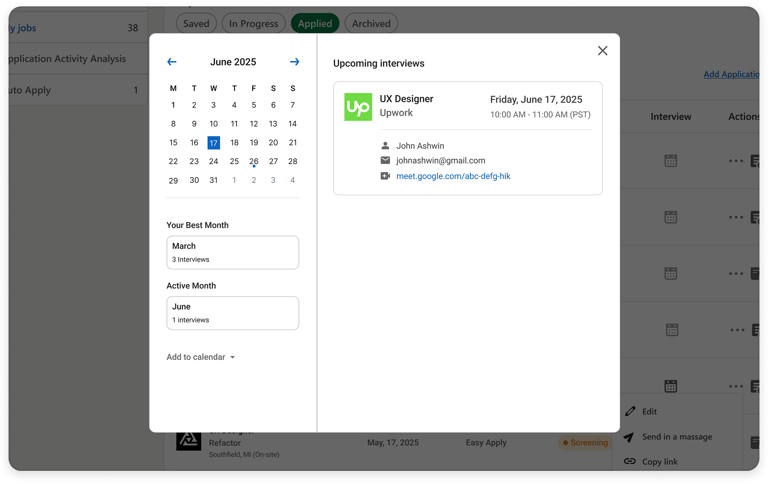

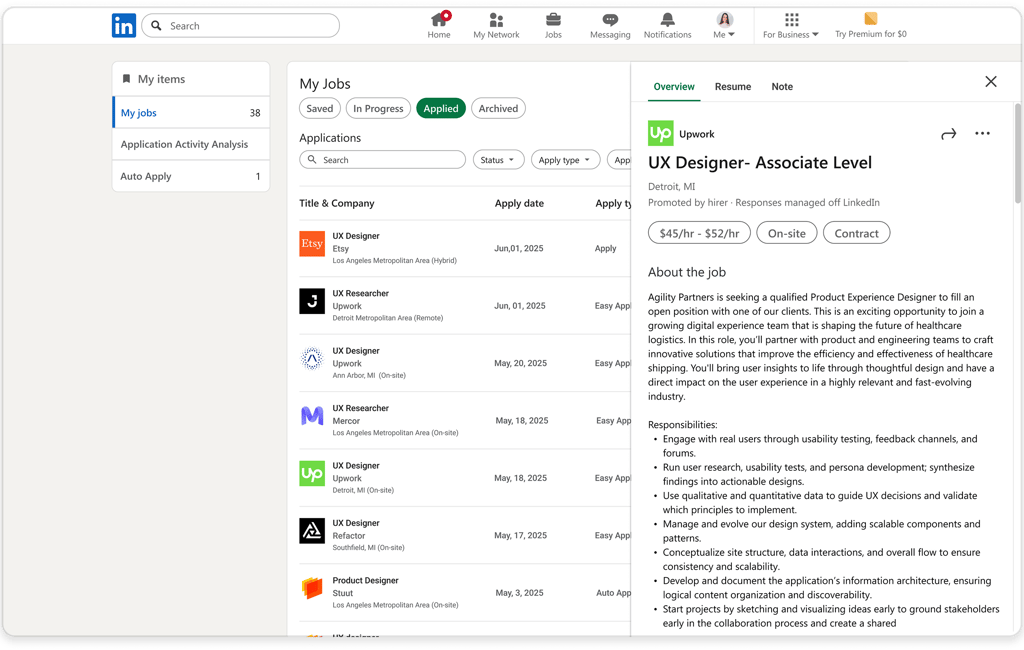

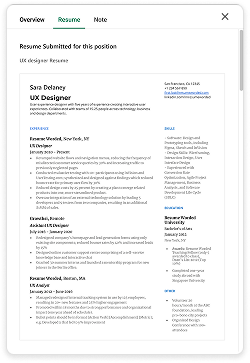

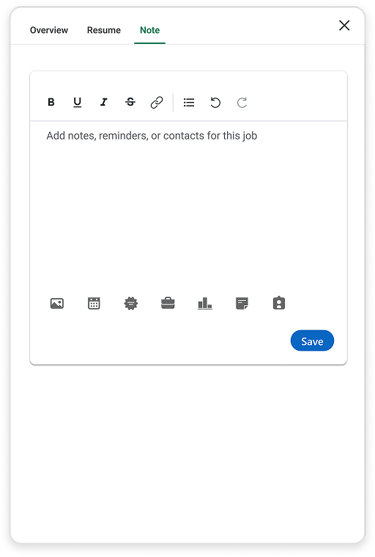




Solution 2
Application Insights that Drive Smarter Moves
❌ Problem
Users often struggle to track job search progress, making it hard to see what’s working or where to improve. Lack of visibility makes it difficult to stay informed, measure success, or stay motivated.
💡Solution
Gives users a clear view of their job search progress through monthly summaries, activity charts, real-time status updates, and personalized tips to stay motivated.
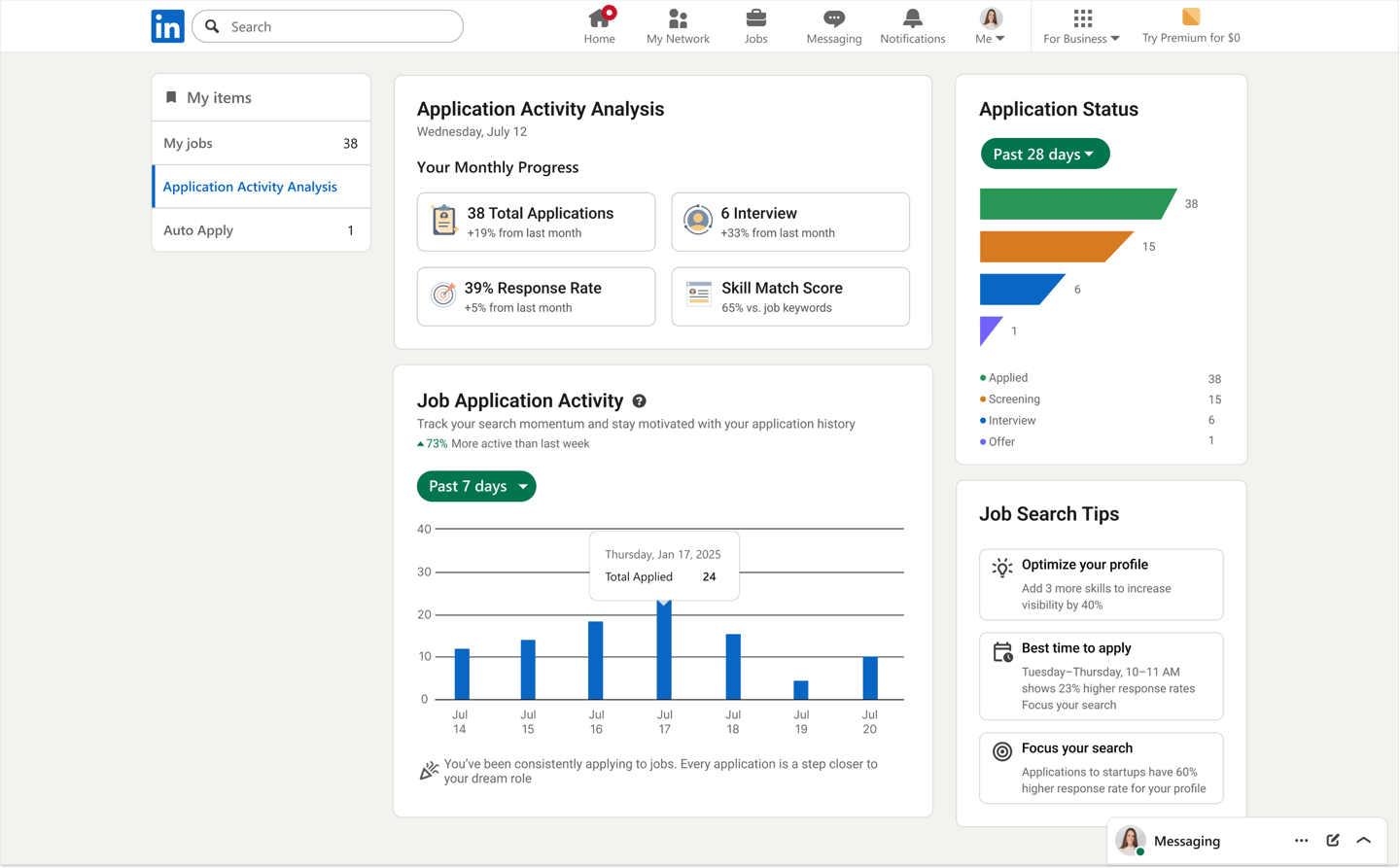

Solution 3
Helping Users Apply Smarter, Not Harder with Personalized Automated Submissions
❌ Problem
Users spend hours applying manually, yet still miss roles that match their experience. The process is repetitive, misaligned with their goals, and leads to frustration.
💡Solution
Auto Apply finds and submits well-matched jobs based on users’ resumes and preferences. It saves time, reduces effort, and helps users stay consistent without missing great opportunities.
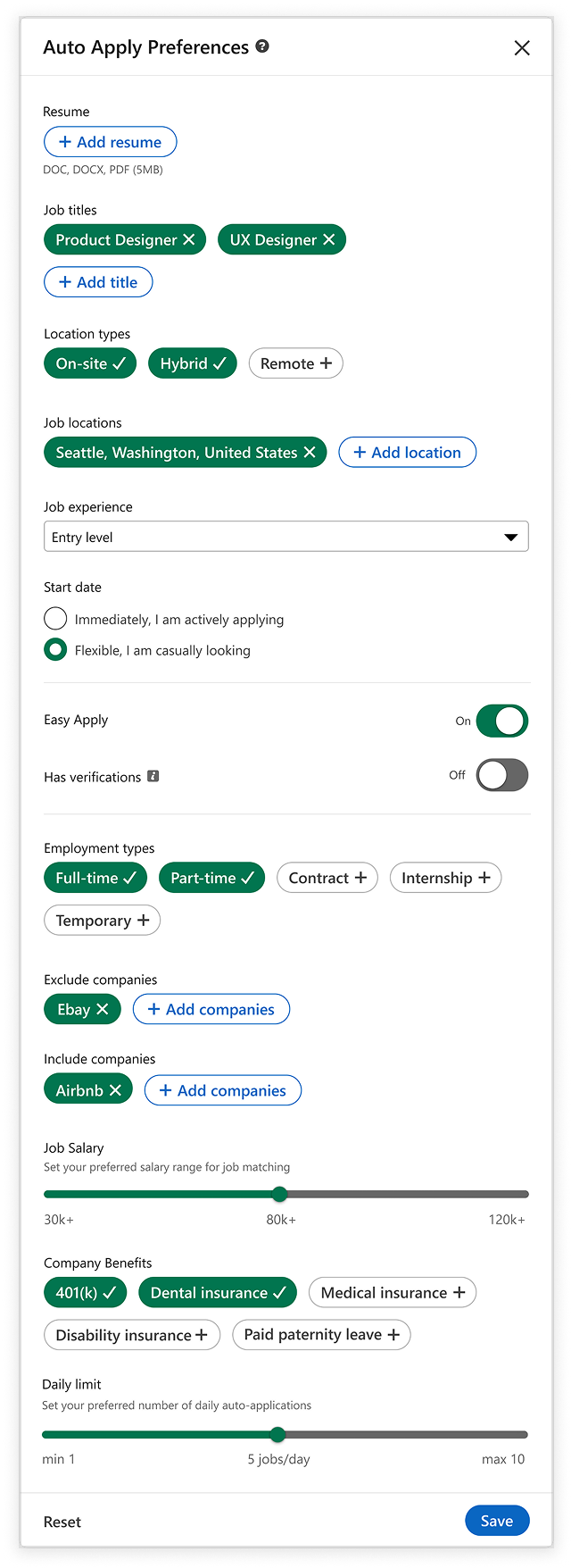

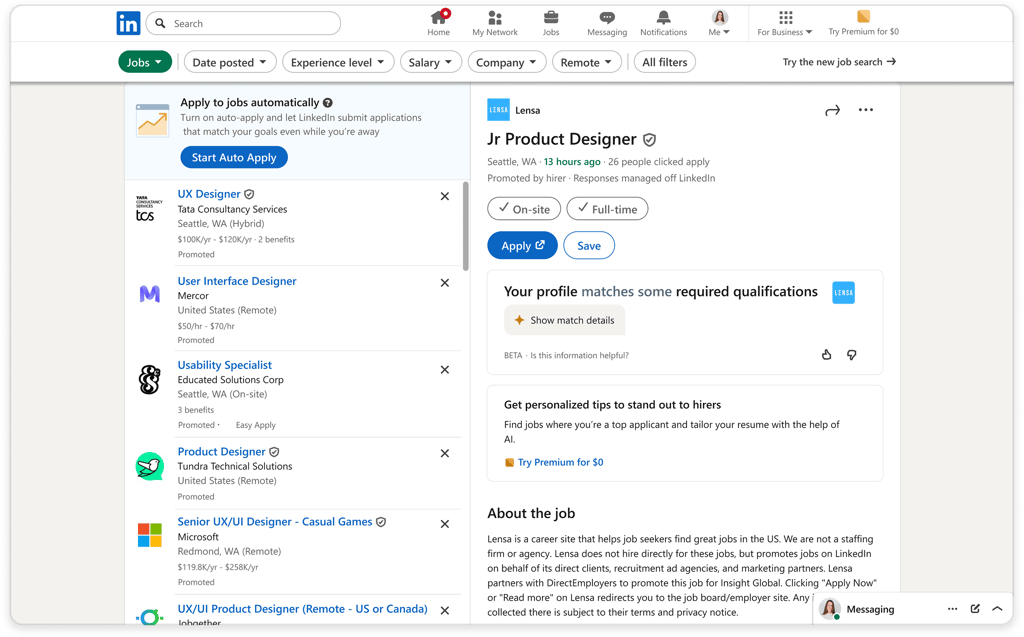

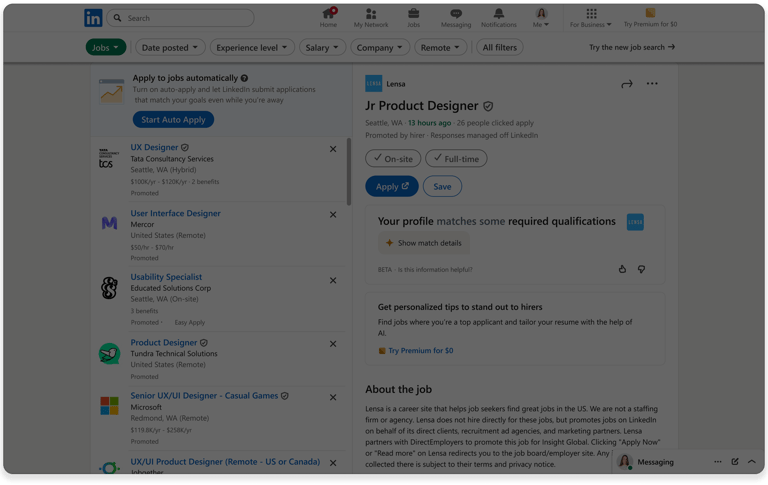

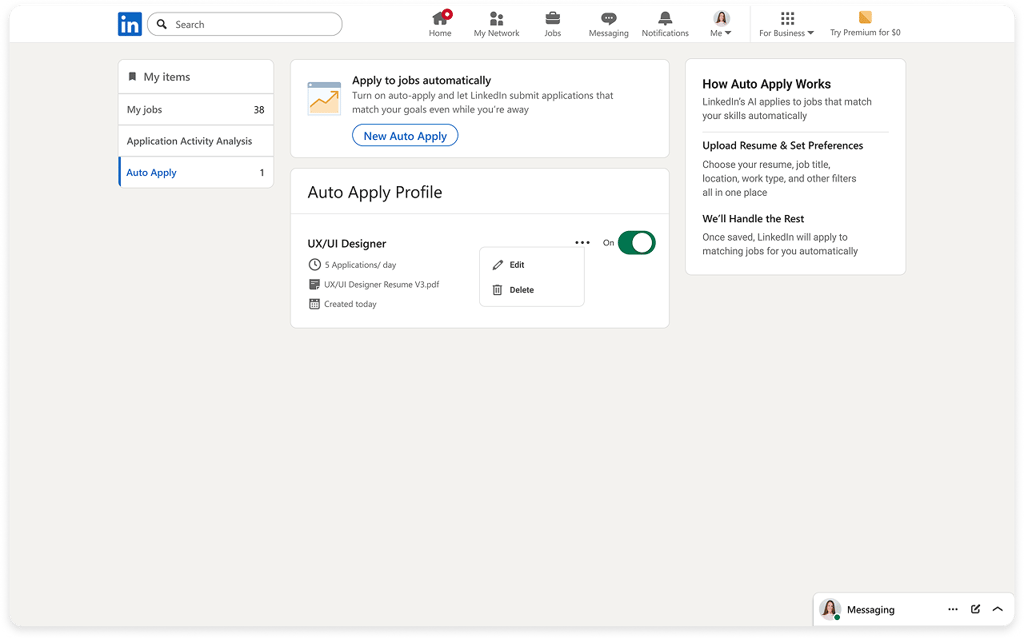



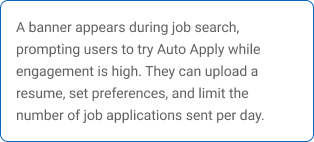



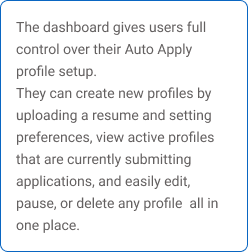

Solution 4
Helping Users Grow Faster, Not Alone
❌ Problem
LinkedIn offers a mentorship service where users can seek career guidance, but this service is difficult to access and not easy for users to find or navigate, limiting its effectiveness and user engagement.
💡Solution
Add a Mentorship Services feature to LinkedIn profiles, connecting users with mentors for mock interviews and career coaching based on their goals and preferences.
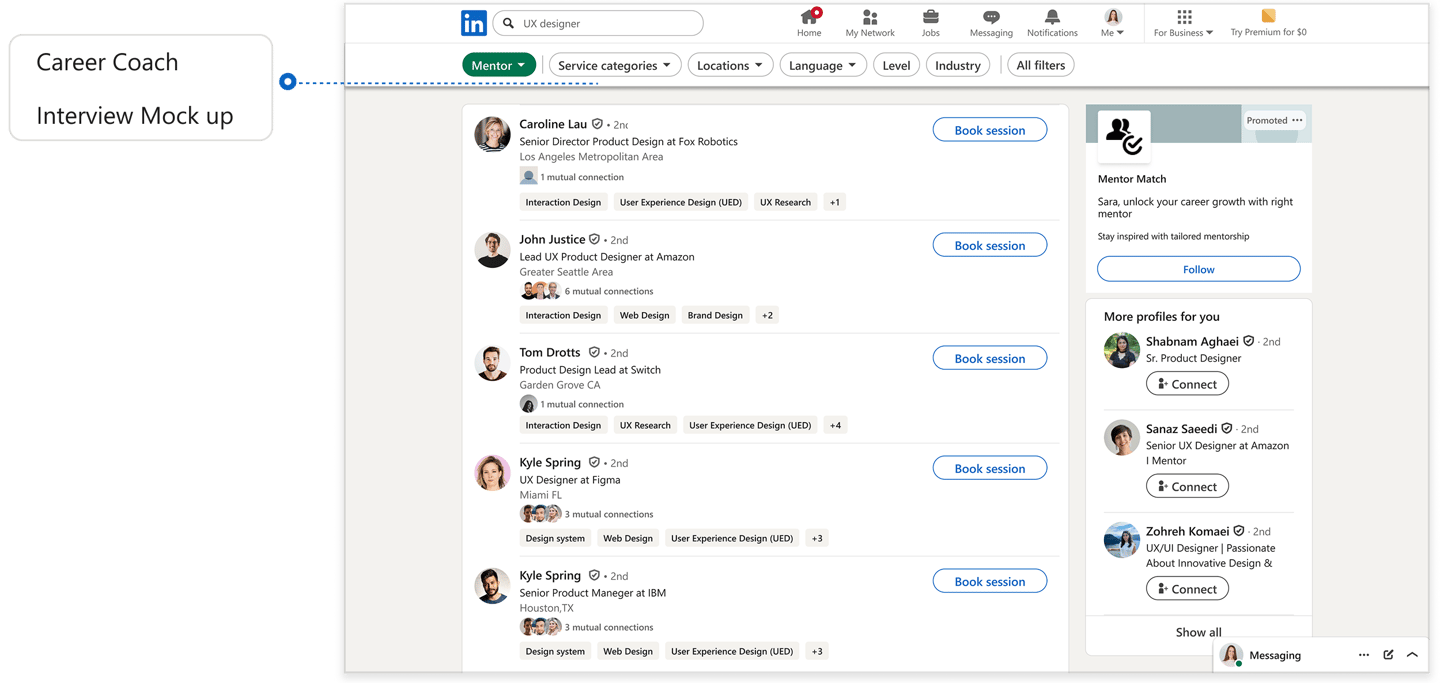

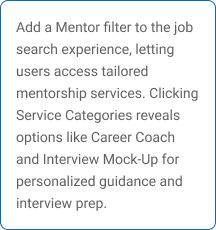

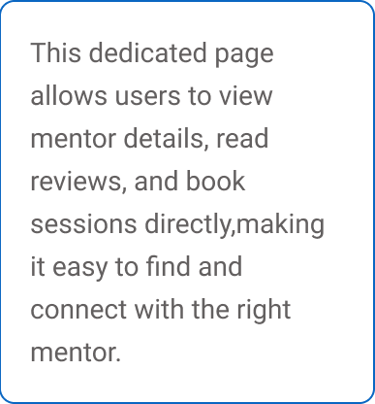

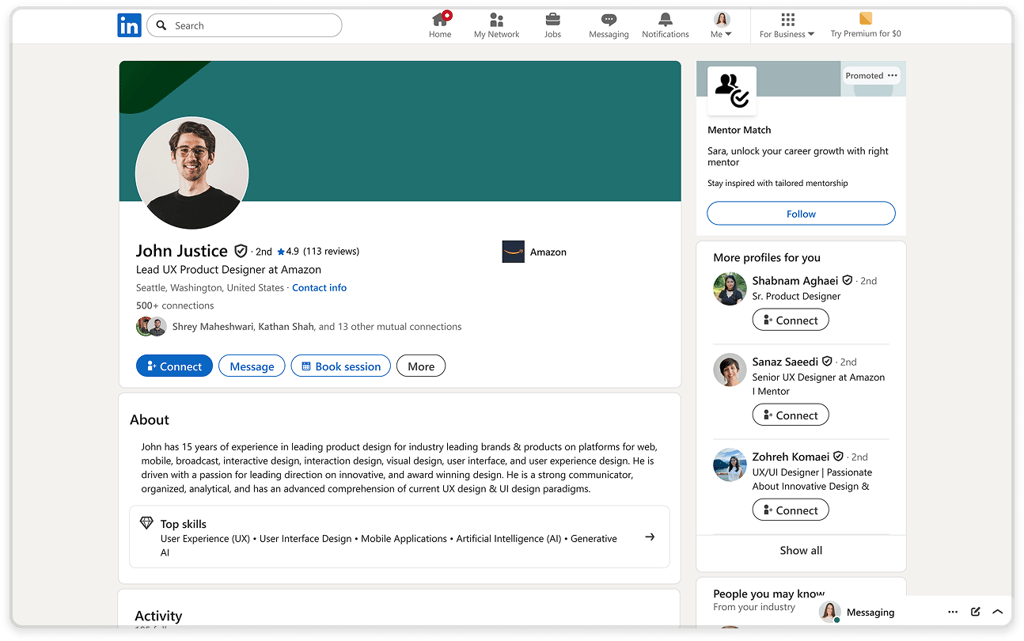


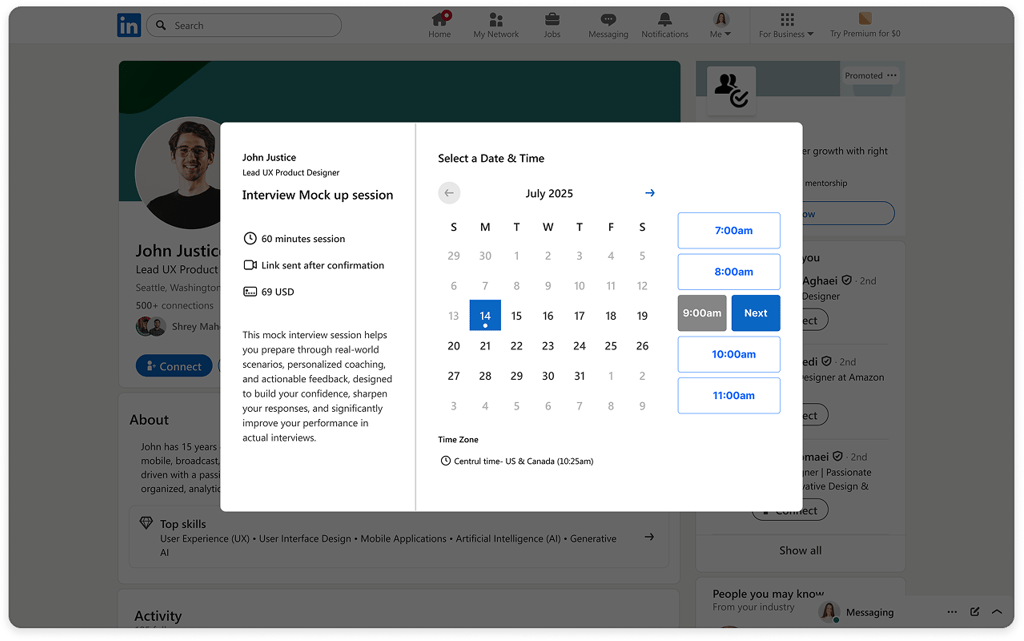

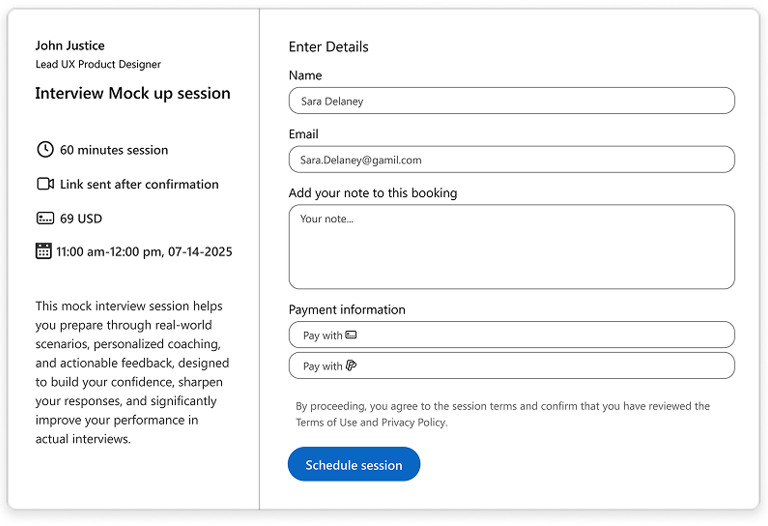

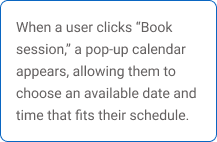


Solution 5
Personalizing the profile experience through a short video introduction
❌ Problem
Lacking a way to show who they truly are, users often feel reduced to documents, scanned, sorted, and filtered, rather than invited into meaningful, human connection.
💡Solution
A short video on the profile showcases personality, communication style, and presence. Helping highlight key strengths, share a career pitch, and make the profile more memorable.
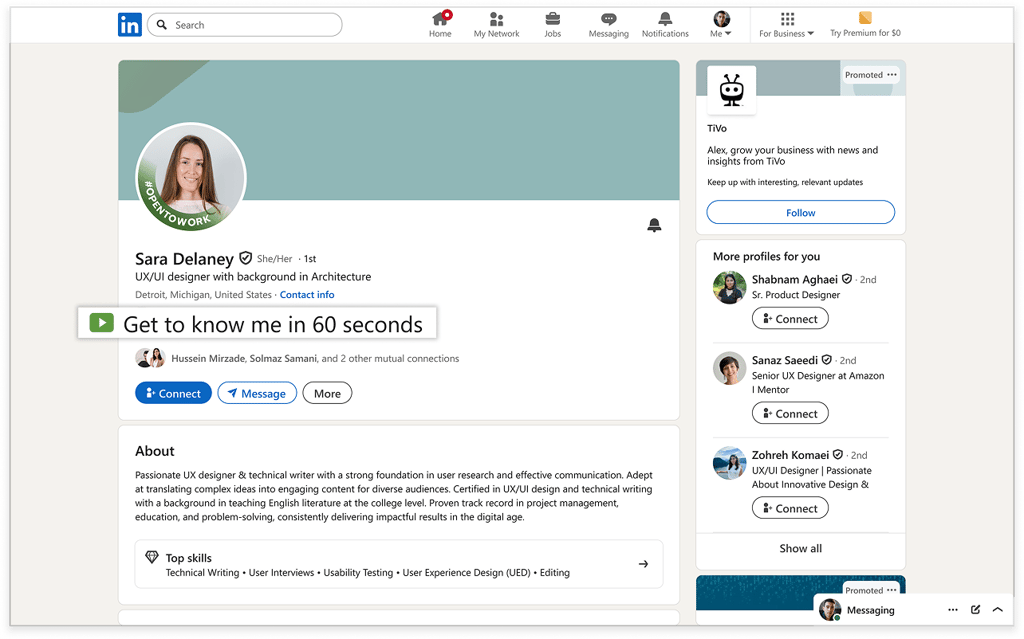



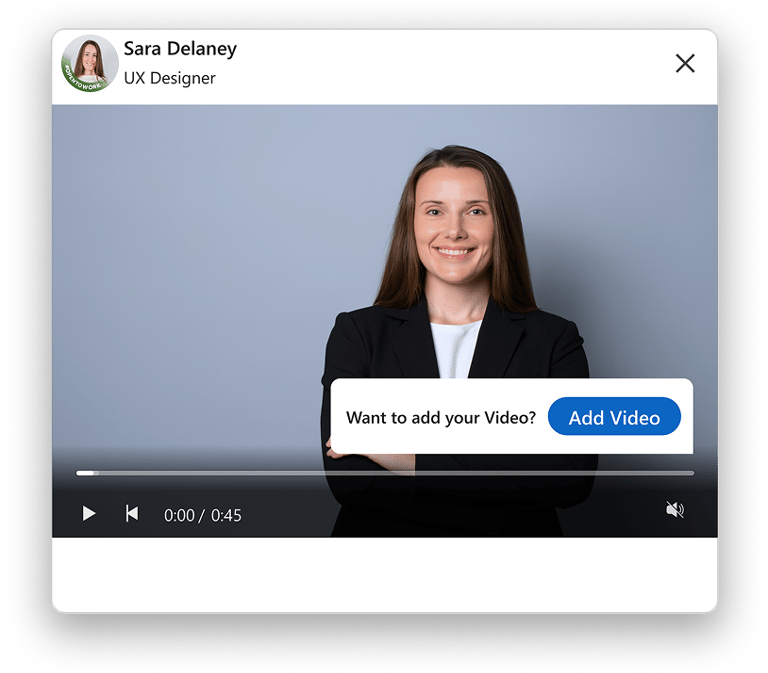





Solution 6
Boosting User Engagement Through Live Conversations and Instant Networking
❌ Problem
Job searching can feel isolating and impersonal, with few opportunities for real-time connection, peer support, or informal knowledge sharing, often leaving candidates feeling disconnected, uncertain, and alone.
💡Solution
The Live Chat feature offers topic-based rooms for real-time conversations. Users can join rooms by connections, explore trending or casual topics, or create their own to - tips and support.
